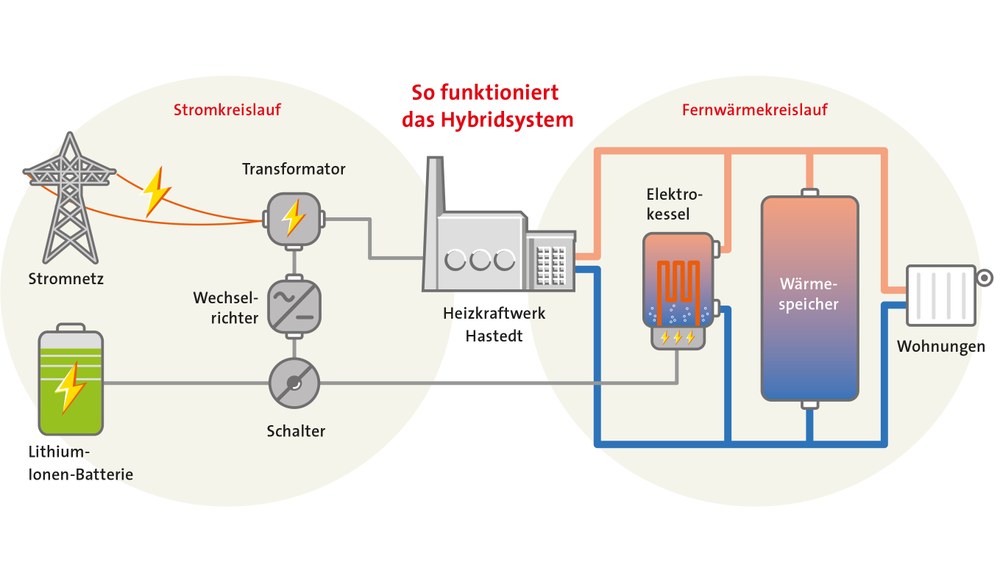Energy Systems Technology
The Energy Systems Technology department focuses on the interaction between system-relevant technologies within decentralised networked structures, particularly at the low-voltage and medium-voltage level.
Since 2019, swb AG has been using a process to provide and market balancing energy that increases the utilisation rate of a large battery used for this purpose to 90 to 95 percent and at the same time extends its service life by 15 to 20 percent. The process, developed jointly with the Institute of Networked Energy Systems, gives the company a competitive advantage, reduces system costs and improves the integration of renewable energies.

swb AG
The new process is a building block in swb's climate strategy, which envisages a gradual phase-out of coal. The combination of power-to-heat technologies has made it possible to increase the proportion of renewable energies in the heat supply. "The hybrid power plant can absorb surplus green electricity and use it to generate heat. Swb has thus created an important prerequisite for the flexible feed-in of e.g. wind or PV power and therefore for improving the carbon footprint," explains the company. The utilisation of renewable energies to fill a heat storage facility for the local and district heating supply effectively reduces CO2 emissions.
The process was developed in the HyReK research project ("Hybrid Controlled Power Plant 2.0"; funded by the Federal Ministry for Economic Affairs and Climate Protection). The Institute of Networked Energy Systems has created a digital replica of the Bremen-Hastedt hybrid power plant in order to analyse its grid serviceability on the basis of real data. In Hastedt, a large battery was combined with a heat storage unit via a heat generator. Once the battery's charging capacity is reached, the surplus energy flows into the storage facility or directly into the district heating network. This enables swb AG to market 90 to 95 per cent of the battery capacity for the provision of balancing energy - usually only 50 per cent can be offered. Using experimental studies and simulation models, the DLR Institute has also succeeded in optimising the control of the battery in such a way that its service life is extended by up to a fifth. The Institute of Networked Energy Systems is continualy evaluating the data in order to identify additional optimisation potential.
Supply and demand must be balanced in the electricity grid, otherwise there is a risk of outages. However, the parameters on both sides are constantly changing: consumers need more or less energy in the short term, while the amount available fluctuates. This will increase in the future with the expansion of weather-dependent energy sources. The transmission system operators are responsible for balancing supply and demand on short time scales. To this end, they organise auctions for the provision of balancing power for various time periods. Suppliers such as power plant operators who can provide or absorb electricity at short notice according to fixed rules can apply.
Until now, balancing energy has mainly been provided by power plants (such as gas and steam turbine power plants), which can flexibly increase or decrease their output. Battery storage systems, which can also be controlled at short notice, are now increasingly being used.
However, as the providers of balancing power must be able to both supply and absorb energy, they can only reserve part of the battery capacity for feed-in. The charge level of the battery is generally around 50 per cent. The remaining capacity is required to be able to absorb energy from the power grid in the event of surpluses. In view of the high purchase costs, this reduces the economic efficiency of battery storage systems. In addition, the battery ages due to the frequent alternation of charging and discharging.
These disadvantages could be offset by the process developed by our institute together with swb AG and AEG Power Solutions. The increase in battery capacity and its coupling to a heat generator also increases the absorption of fluctuating energy from wind farms, for example, which might otherwise have to be curtailed. This improves the efficiency of the overall system and helps to implement energy transition.
